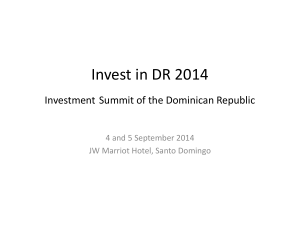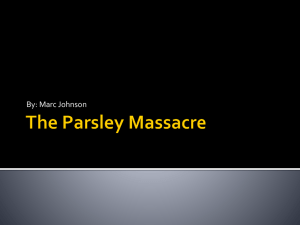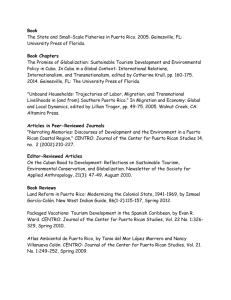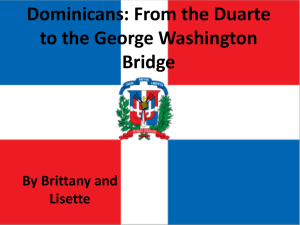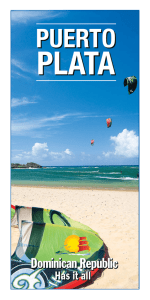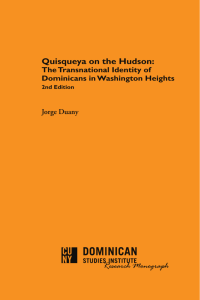The Dominican speech community in Puerto Rico
advertisement
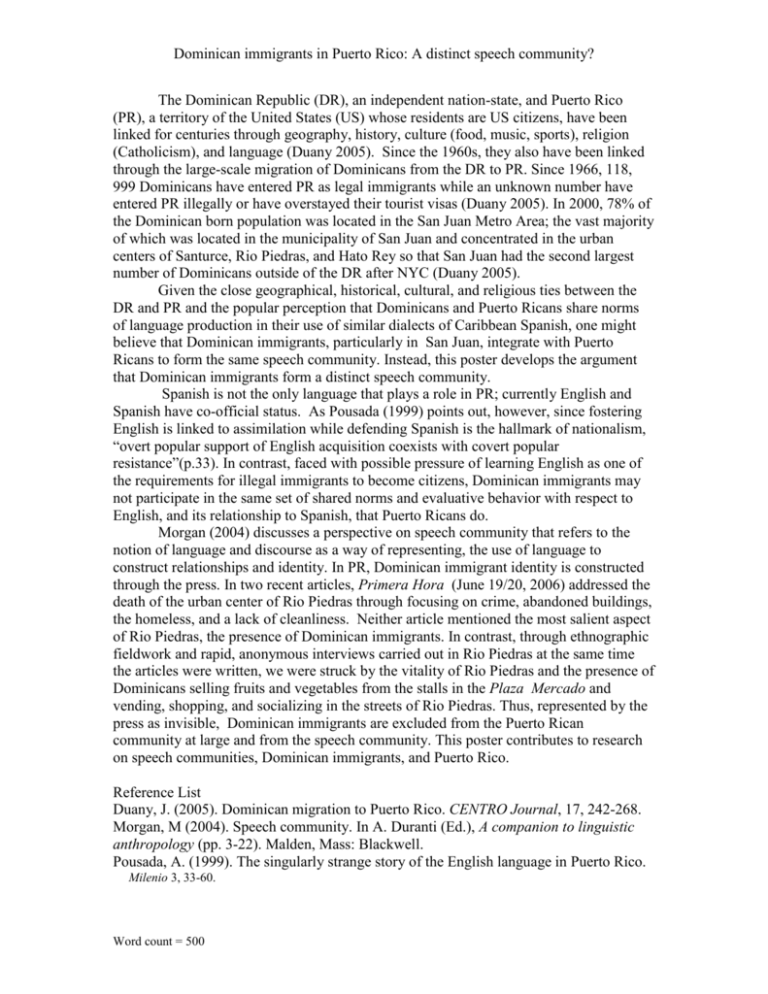
Dominican immigrants in Puerto Rico: A distinct speech community? The Dominican Republic (DR), an independent nation-state, and Puerto Rico (PR), a territory of the United States (US) whose residents are US citizens, have been linked for centuries through geography, history, culture (food, music, sports), religion (Catholicism), and language (Duany 2005). Since the 1960s, they also have been linked through the large-scale migration of Dominicans from the DR to PR. Since 1966, 118, 999 Dominicans have entered PR as legal immigrants while an unknown number have entered PR illegally or have overstayed their tourist visas (Duany 2005). In 2000, 78% of the Dominican born population was located in the San Juan Metro Area; the vast majority of which was located in the municipality of San Juan and concentrated in the urban centers of Santurce, Rio Piedras, and Hato Rey so that San Juan had the second largest number of Dominicans outside of the DR after NYC (Duany 2005). Given the close geographical, historical, cultural, and religious ties between the DR and PR and the popular perception that Dominicans and Puerto Ricans share norms of language production in their use of similar dialects of Caribbean Spanish, one might believe that Dominican immigrants, particularly in San Juan, integrate with Puerto Ricans to form the same speech community. Instead, this poster develops the argument that Dominican immigrants form a distinct speech community. Spanish is not the only language that plays a role in PR; currently English and Spanish have co-official status. As Pousada (1999) points out, however, since fostering English is linked to assimilation while defending Spanish is the hallmark of nationalism, “overt popular support of English acquisition coexists with covert popular resistance”(p.33). In contrast, faced with possible pressure of learning English as one of the requirements for illegal immigrants to become citizens, Dominican immigrants may not participate in the same set of shared norms and evaluative behavior with respect to English, and its relationship to Spanish, that Puerto Ricans do. Morgan (2004) discusses a perspective on speech community that refers to the notion of language and discourse as a way of representing, the use of language to construct relationships and identity. In PR, Dominican immigrant identity is constructed through the press. In two recent articles, Primera Hora (June 19/20, 2006) addressed the death of the urban center of Rio Piedras through focusing on crime, abandoned buildings, the homeless, and a lack of cleanliness. Neither article mentioned the most salient aspect of Rio Piedras, the presence of Dominican immigrants. In contrast, through ethnographic fieldwork and rapid, anonymous interviews carried out in Rio Piedras at the same time the articles were written, we were struck by the vitality of Rio Piedras and the presence of Dominicans selling fruits and vegetables from the stalls in the Plaza Mercado and vending, shopping, and socializing in the streets of Rio Piedras. Thus, represented by the press as invisible, Dominican immigrants are excluded from the Puerto Rican community at large and from the speech community. This poster contributes to research on speech communities, Dominican immigrants, and Puerto Rico. Reference List Duany, J. (2005). Dominican migration to Puerto Rico. CENTRO Journal, 17, 242-268. Morgan, M (2004). Speech community. In A. Duranti (Ed.), A companion to linguistic anthropology (pp. 3-22). Malden, Mass: Blackwell. Pousada, A. (1999). The singularly strange story of the English language in Puerto Rico. Milenio 3, 33-60. Word count = 500



